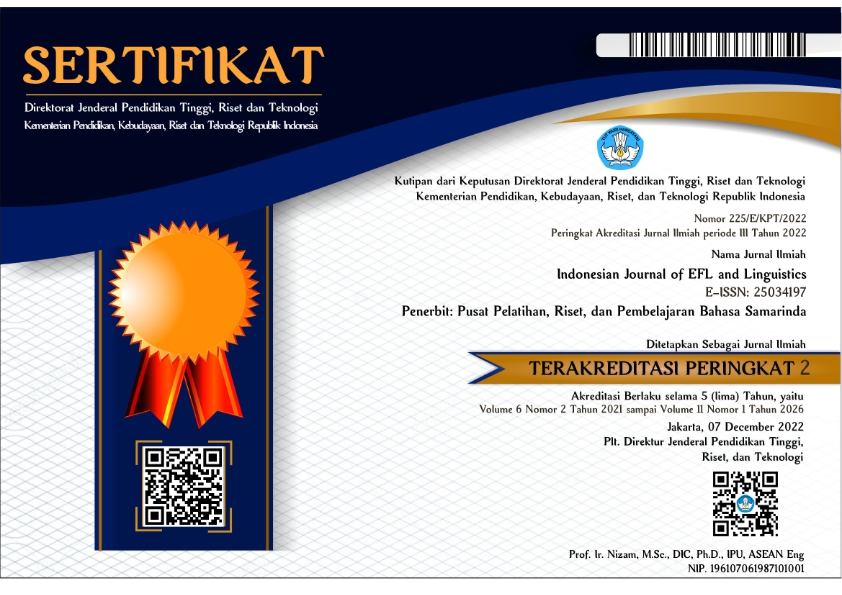Semiotic Landscape of Chinese Murals in Kya-Kya, Surabaya
Abstract
This research delves into how Chinese murals in Kya-Kya, a Chinatown of Surabaya, visually convey meaning from the semiotic landscape point of view. Through Widgren's Theory of Form, Function, Process, and Context, this study seeks to discover how Chinese and Peranakan Cultures are represented in two Chinese Murals in Kya-Kya. The data source of this research is taken from the researchers` photographs of a few representatives of Chinese Murals in Kya-Kya. The data analyzed in this study include text (words), pictures, and colors. The findings show that the murals' text, pictures, colors, and shapes carry messages closely tied to the area's history, culture, and norms. They act as complex communication tools. The first mural uses color and Chinese symbols that match traditional Chinese cultural meanings, showing solid cultural connections. The second mural focuses more on the area's history, especially the influence of Chinese immigrants and Peranakan culture on local business and daily life. This is shown through cultural icons like traditional clothes, food, and building styles, a mixture of Chinese, Peranakan, and Javanese cultures. Both murals celebrate Kya-Kya's rich cultural heritage. The implications of this research extend to developing conservation strategies that respect both the artistic qualities and cultural meanings embedded within the murals, ultimately contributing to a deeper understanding of how communities express and sustain their heritage in contemporary contexts.
Copyright (c) 2025 Indonesian Journal of EFL and Linguistics

This work is licensed under a Creative Commons Attribution-NonCommercial-ShareAlike 4.0 International License.




